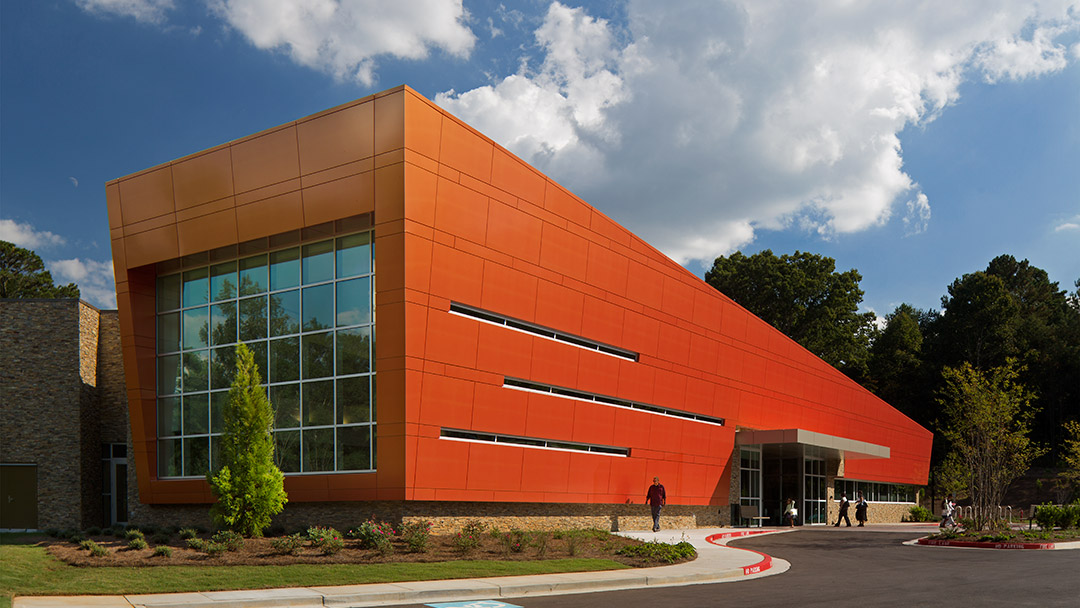Centennial Library
Opened in 1985, the existing Centennial Library facility lacked adequate meeting room and programming space, effective design for service areas, and an efficient traffic flow in the entry area. Restrooms, counter tops, windows, air handler and air conditioning were all original to the building and in need of replacement. A full renovation of the existing 6,300 SF footprint and the addition of another 8,300 SF allowed the library to provide updated and vibrant spaces for the many adults, children and teens who frequent the library.
A community hub
During community input meetings, stakeholders expressed that the library is a vital community hub in a need of spaces for groups of varying sizes to gather. The resulting design includes several meeting rooms, the largest of which is a large flexible space with sliding glass doors that can open up to the children’s area. This space has a separate entrance to allow it to be used after hours.
As the library is linked to the Circle Pines Civic Campus, which includes a community garden and access via bike trail, the design features an outdoor program area and an IQ Kitchen. The fully-equipped classroom kitchen has technology to record and share cooking classes. The room doubles as a maker space, providing access to a 3D printer, sewing machines and Silhouette CAMEO® 3 vinyl/paper cutter. Sliding glass doors allow the room to expand into the library for larger events.
To foster its community focus, the design took inspiration from the concept of hygge, defined as creating well-being, a community of connection and a feeling of warmth and comfort. Central to capturing this feeling is a fireplace that creates a destination in both the children’s area and the lobby. The lobby side of the fireplace is warm, cozy and inviting – great for quiet conversation, reading or even group crocheting. The children’s side of the fireplace, in contrast, is more active, surrounded by wide-open space and a higher, exposed ceiling, but still a great space for a child to read a book with a loved one. It also provides separation between the children’s area and the “quieter” areas of the library.
Flexibility for the future
Flexible furnishings can be found throughout the spaces, providing flexibility through a wide variety of arrangement opportunities. By creating “barrier free” zones along the window walls, designers maximized the amount of daylight within the library. Sustainable design features include rain gardens with native plantings to capture and treat rainwater on site and re-use of the original structure to minimize waste. New, more efficient systems and increased insulation also decrease energy costs.
The design also upgraded back-of-house processes, including reconfigured staff breakout space, reconfigured work rooms for sorting and staff projects and a new automated materials handling system.
Client
Anoka County Library
At a glance
14,600 SF renovation and expansion
Features
Outdoor program area
IQ kitchen/maker space
Children’s area
Central fireplace
New automated materials handling system
Rain garden with native plantings
Services
Architecture
Interior design
Civil, structural, mechanical, electrical and fire protection engineering
Awards
Merit Award, AIA Minnesota
Top Project Award, Minneapolis Finance&Commerce


